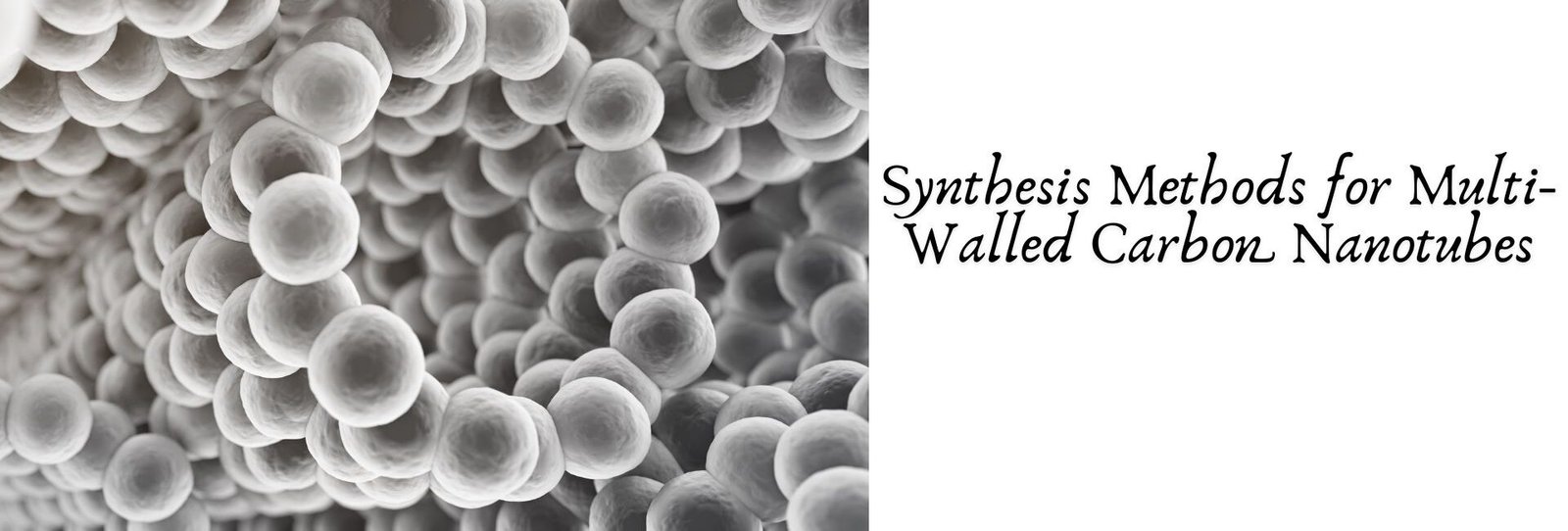
Introduction
Multi walled carbon nanotubes (MWCNTs) have emerged as one of the most intriguing nanomaterials due to their exceptional mechanical, thermal, and electrical properties. These concentric cylindrical structures, consisting of multiple layers of graphene sheets rolled into tubes, offer a wide range of applications—from electronics and energy storage to biomedical devices and composite materials. However, the synthesis of high-quality MWCNTs is a critical step that directly influences their performance in various applications. This article explores the major synthesis methods for MWCNTs, comparing their mechanisms, advantages, challenges, and suitability for different applications.
Chemical Vapor Deposition (CVD)
Overview:
CVD is the most widely used method for synthesizing MWCNTs due to its scalability, cost-effectiveness, and relatively high yield. In this process, hydrocarbon gases (such as methane, ethylene, or acetylene) are decomposed at high temperatures (600–1200°C) in the presence of a transition metal catalyst (e.g., Fe, Co, Ni).
Mechanism:
The catalyst particles facilitate the decomposition of carbon feedstock gases, allowing carbon atoms to dissolve into the metal particles. Upon saturation, carbon precipitates out and forms tubular structures.
Advantages:
- High yield and purity
- Controllable diameter and length
- Scalable for industrial production
Limitations:
- Presence of catalyst residues
- Requires post-synthesis purification
Applications:
- Composite reinforcement
- Energy storage devices
- Conductive films
Arc Discharge Method
Overview:
The arc discharge method involves creating a high-temperature plasma arc between two graphite electrodes under an inert gas atmosphere (usually helium or argon). The high energy causes the graphite to vaporize, leading to the formation of carbon nanotubes.
Mechanism:
A high current (typically 50–100 A) is passed through the graphite electrodes, generating temperatures above 3000°C. The carbon vapor condenses to form MWCNTs, often with catalyst particles (e.g., Fe or Ni) introduced to guide the tube formation.
Advantages:
- Produces high-quality and crystalline MWCNTs
- Simple setup for lab-scale production
Limitations:
- Low yield and poor scalability
- Requires extensive purification
- Difficult to control tube dimensions
Applications:
- Fundamental research
- High-strength nanomaterials
Laser Ablation
Overview:
Laser ablation uses a high-powered laser to vaporize a graphite target, often doped with a catalyst, in a high-temperature furnace. The process occurs in an inert gas environment to prevent unwanted reactions.
Mechanism:
The pulsed laser beam vaporizes the target material, and carbon vapor condenses as it cools down, forming MWCNTs. This method typically operates at around 1200°C.
Advantages:
- High-purity and defect-free MWCNTs
- Good control over diameter and alignment
Limitations:
- Expensive equipment and operation
- Not suitable for mass production
- Low material yield
Applications:
- Electronics
- Biomedical imaging
- Research-grade materials
Flame Synthesis
Overview:
This method mimics the natural soot formation process and involves burning hydrocarbons in a controlled manner. Catalysts are introduced into the flame to promote MWCNT growth.
Mechanism:
Hydrocarbon flames provide the necessary thermal energy for carbon feedstock decomposition. Catalysts in the flame initiate the growth of MWCNTs from the carbon species present.
Advantages:
- Simple and low-cost setup
- Potential for continuous production
Limitations:
- Low purity
- Inconsistent morphology
- Difficult to control growth conditions
Applications:
- Field emission devices
- Structural composites
- Bulk materials where ultra-purity is not critical
Hydrothermal and Solvothermal Methods
Overview:
Though less common, these methods involve chemical reactions in sealed autoclaves at elevated pressures and temperatures. Organic carbon precursors and catalysts are typically used.
Mechanism:
Carbon precursors undergo controlled thermal decomposition in the presence of metal salts or nanoparticles, leading to the slow growth of MWCNTs.
Advantages:
- Low temperature and pressure relative to CVD
- Possibility for doping with heteroatoms or functional groups
Limitations:
- Time-consuming
- Low crystallinity
- Limited to research-scale synthesis
Applications:
- Functionalized nanotubes
- Sensor technology
- Drug delivery research
Electrochemical Synthesis
Overview:
This technique involves electrolysis of carbon electrodes in an electrolyte solution, often yielding nanotube-like structures under specific conditions.
Mechanism:
An electrical current is applied to a carbon source immersed in an electrolyte, causing carbon atoms to detach and recombine as MWCNTs under suitable conditions.
Advantages:
- Room temperature operation
- Controlled growth environment
Limitations:
- Low yield
- Inconsistent structure and quality
Applications:
- Experimental and academic research
- Niche applications requiring specific properties
Conclusion
The synthesis method chosen for MWCNT production has a profound impact on the resulting structure, quality, and applicability of the nanotubes. While CVD remains the most versatile and scalable approach, arc discharge and laser ablation are preferred for high-purity applications. Flame and electrochemical methods, despite their simplicity, are generally reserved for experimental purposes or applications where high precision is not a priority. As demand for MWCNTs continues to grow across industries, advancements in synthesis techniques—particularly toward greener, scalable, and cost-effective processes—will be key to unlocking their full potential.

